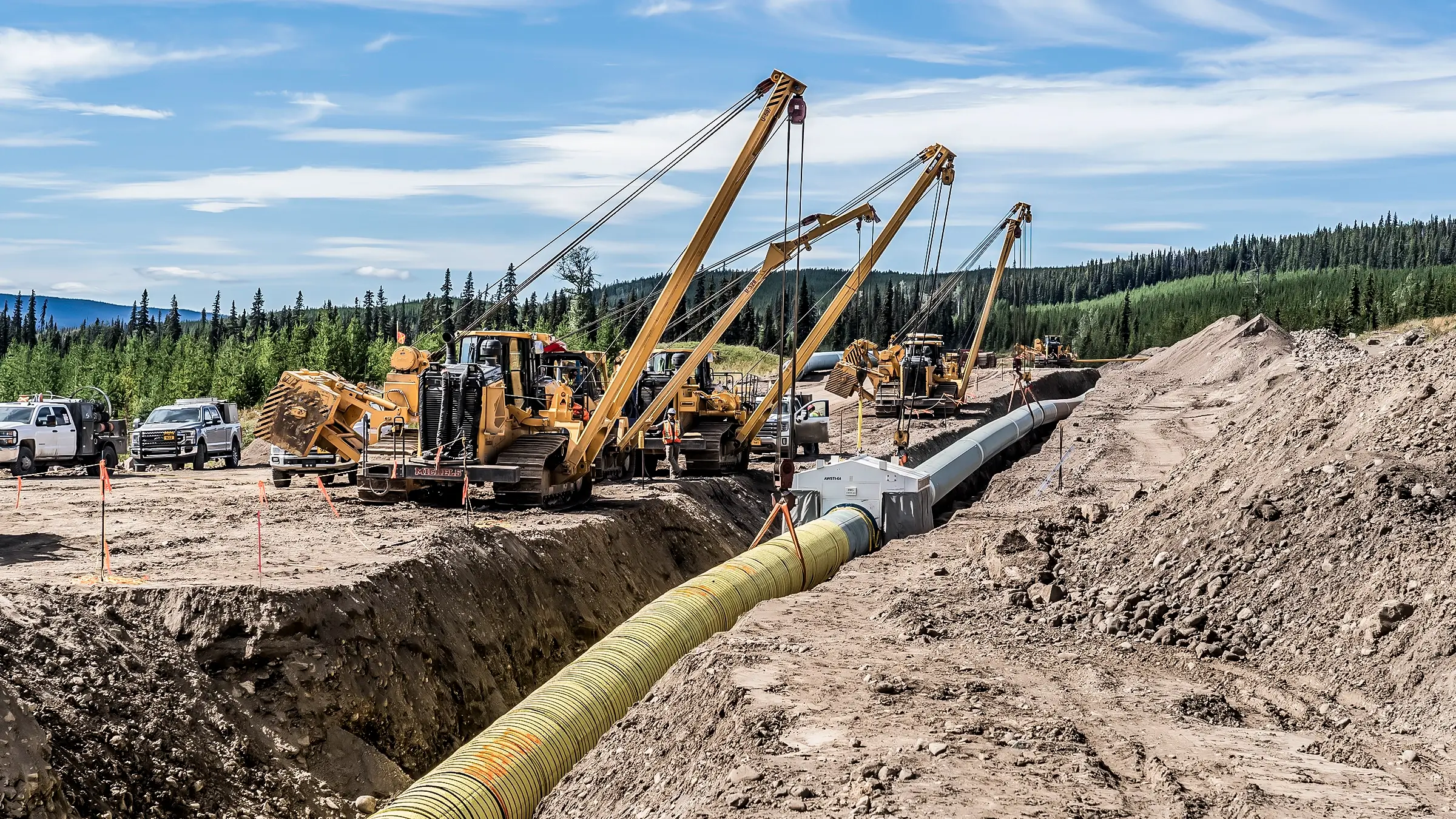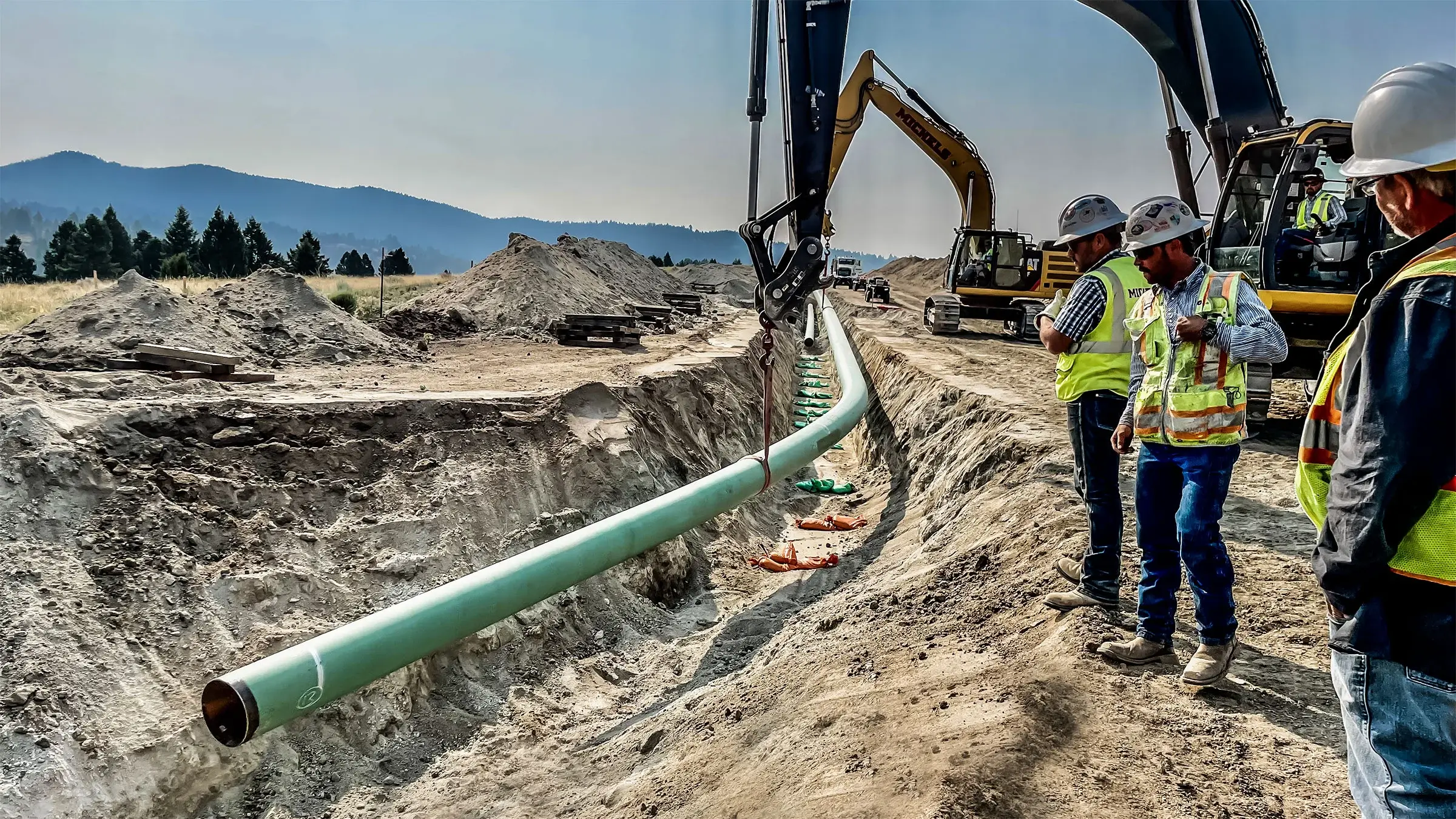Why Durable Systems Start With Proper Creek Pipe HDPE installation
The Importance of Pipeline Construction: Checking Out the Providers Provided in the Sector
Pipeline construction is a vital part of modern facilities. It promotes the transportation of vital sources like oil, gas, and water. The industry includes different solutions, including planning, site prep work, and installment. Each stage requires precision and adherence to safety and security standards. As communities depend upon these systems for their resources, understanding the complexities of pipeline construction exposes its value and possible challenges. What elements influence the success of these jobs?
Introduction of Pipeline Construction Providers
Pipeline construction solutions incorporate a variety of specialized activities developed to help with the setup of pipelines for delivering numerous materials, consisting of oil, gas, and water. These solutions normally consist of website prep work, excavation, setup of pipeline sections, and backfilling. Proficient labor and sophisticated devices are basic for assuring each stage is carried out with accuracy and safety.Safety procedures are vital, as these jobs commonly include working with dangerous materials and in challenging environments. Quality assurance actions identify that the pipes satisfy industry criteria and laws. Furthermore, the services may entail trenchless innovation, which reduces surface disruption.Environmental factors to consider play a considerable function in pipeline construction, calling for analyses and mitigations to secure surrounding environments. In general, pipeline construction solutions are vital for establishing the framework needed for energy and water circulation, supporting both financial growth and societal requirements.
Planning and Layout in Pipeline Projects
Efficient preparation and style are crucial parts of successful pipe jobs, ensuring that all elements are meticulously resolved before construction starts. This phase entails extensive feasibility research studies that evaluate the technological, economic, and ecological elements affecting the project. Engineers and developers work together to develop comprehensive strategies that outline the pipe course, materials, and construction approaches, aligning with governing demands and sector standards.Advanced software application and modeling strategies are commonly employed to imitate different scenarios, maximizing the style for efficiency and security. Environmental influence evaluations are conducted to alleviate potential injury to communities and areas, reflecting a commitment to lasting practices. Furthermore, stakeholder engagement is vital, cultivating communication and resolving concerns from influenced parties. Ultimately, reliable planning and design established the foundation for a pipeline job, minimizing risks and making sure a structured construction procedure, inevitably adding to the total success of the procedure.
Site Preparation and Excavation
Extensive site preparation and excavation are vital actions in the pipeline construction process. This stage entails a thorough assessment of the land where the pipe will certainly be mounted. Task groups perform surveys to identify dirt types, topography, and existing energy lines to assure a risk-free and effective excavation. Appropriate site prep work lessens environmental influence and assists in smoother construction operations.Excavation complies with, where hefty machinery is employed to eliminate soil and rock, creating a trench that meets the defined deepness and width for the pipeline. This procedure needs to abide by security policies and environmental guidelines to avoid damage to bordering ecosystems.Additionally, disintegration control actions are executed to maintain the site throughout and after excavation. Reliable website prep work and excavation contribute greatly to the general success of pipe projects, laying a solid structure for the succeeding phases of construction.
Pipeline Installation Methods
Pipeline installation strategies are crucial for the successful application of framework projects. Two famous approaches include trenchless innovation, which decreases surface area interruption, and the open-cut excavation process, known for its straightforward strategy. Each strategy offers unique advantages and factors to consider depending upon task needs and environmental variables.
Trenchless Technology Techniques
While standard methods of pipeline setup typically include extensive excavation, trenchless technology approaches supply a more reliable and eco-friendly choice. These innovative methods, such as horizontal directional exploration and pipe bursting, lessen surface disruption by allowing for the installment of pipelines without extensive digging. This not just decreases the environmental effect but likewise substantially minimizes labor and reconstruction expenses. Trenchless approaches facilitate the installment of pipes in urban areas where conventional excavation would be unwise or destructive to existing infrastructure. In addition, these strategies can accommodate different dirt kinds and conditions, making them flexible remedies for pipeline construction. Ultimately, trenchless innovation stands for a substantial innovation in the pipeline market, promoting sustainability and functional efficiency.

Open-Cut Excavation Refine
Open-cut excavation stays a fundamental method in pipeline setup, defined by the direct excavation of a trench to lay pipelines. This approach involves getting rid of dirt and other products to create a trench of sufficient depth and width, permitting for the positioning of pipelines at the required grade. Open-cut excavation is usually chosen for its cost-effectiveness and simplicity, especially in areas with secure soil conditions. It can disrupt surface area tasks and needs mindful planning to take care gas line repair service near me of web traffic and environmental influences. Precaution need to be applied to safeguard employees and nearby facilities during the excavation process. On the whole, while open-cut excavation may not appropriate for all terrains, it remains a widely used method in pipe construction.
Evaluating and Quality Control
Testing and quality control are critical parts in pipeline construction, making certain that installations fulfill recognized safety and security standards and efficiency demands. Various inspection techniques and methods are employed to assess material quality and adherence to governing conformity. This organized technique assists identify possible problems before they escalate, safeguarding the honesty of the pipe system.

Examination Techniques and Approaches
Assessment methods and methods are essential parts in ensuring the honesty and security of pipeline construction. Numerous techniques, including aesthetic examinations, ultrasonic screening, and radiographic evaluations, are employed to detect defects and confirm high quality. Aesthetic assessments allow for the recognition of surface anomalies, while ultrasonic screening utilizes audio waves to examine wall density and find flaws inside. Radiographic evaluations article source involve X-rays or gamma rays to create images of the pipe's structure, disclosing covert concerns. In addition, pressure testing is carried out to examine the pipeline's stability under operational problems. These approaches collectively contribute to a comprehensive understanding of the pipe's condition, allowing prompt upkeep decisions and making sure conformity with industry requirements. Reliable evaluation is important for preventing failures and advertising lasting functional safety.
Security Requirements Conformity
Ensuring compliance with security requirements is extremely important in pipe construction, as it directly impacts the job's overall high quality and integrity. Following established policies and guidelines assurances that construction methods alleviate dangers connected with pipe setup and procedure. Creek Pipe contact. Strenuous screening methods, consisting of non-destructive testing and pressure assessments, are essential in confirming that pipelines can withstand the functional anxieties they will certainly come across. Quality guarantee steps are likewise important, as they establish a structure for constant tracking and evaluation throughout the construction procedure. By focusing on security standards compliance, companies not only protect workers and the environment however likewise improve the honesty of the pipe, inevitably causing long-lasting operational success and public trust in the framework
Product Quality Evaluation
Product quality analysis plays a substantial function in the overall honesty of pipeline construction. This process involves strenuous screening and quality guarantee steps to assure that materials fulfill industry criteria and specs. Various examinations, including tensile toughness, deterioration resistance, and weld honesty evaluations, are carried out to recognize any possible weaknesses. An extensive evaluation not only assures the performance of the pipeline however additionally enhances security and durability over its life expectancy. In addition, implementing high quality control methods aids mitigate dangers connected with product failures, which can result in expensive fixings and environmental risks. By prioritizing worldly high quality analysis, firms can guarantee compliance with regulatory requirements while fostering confidence among stakeholders in the dependability of their pipeline systems.
Upkeep and Repair Service Providers
Repair and maintenance solutions play an important role in the longevity and efficiency of pipeline systems. These solutions incorporate normal examinations, repairing, and rehabilitative activities to resolve damage, leakages, and other issues that may occur in time. Competent professionals make use of sophisticated innovations such as ultrasonic testing and smart pigging to check pipe stability, ensuring that any kind of possible issues are identified YOURURL.com early.Additionally, upkeep programs usually include scheduled preventative procedures developed to enhance system integrity and decrease the likelihood of unanticipated failures. Repair solutions may involve the substitute of damaged areas, securing leakages, or employing trenchless technology for marginal disruption.
Environmental Conformity and Precaution
Pipeline systems not only call for continuous maintenance and repair service to function successfully but likewise must stick to rigid ecological conformity and precaution. These policies are essential for lessening eco-friendly effect and making certain public safety. Business in the pipe construction industry execute detailed environmental evaluations prior to task initiation, identifying possible risks to wildlife and ecosystems.Furthermore, adherence to safety and security protocols secures employees and bordering communities. This includes routine training on emergency situation feedback and spill avoidance techniques.To maintain compliance, markets make use of keeping track of technologies to spot leaks and various other anomalies in real-time. Ecological management strategies are commonly developed to outline actions for addressing unexpected concerns throughout construction.Ultimately, strict adherence to ecological conformity and precaution not just meets lawful obligations yet also promotes sustainable techniques within the sector, promoting a balance between framework advancement and ecological stewardship.
Regularly Asked Questions
What Profession Opportunities Are Readily Available in Pipeline Construction?
Job possibilities in pipe construction include duties such as job supervisors, engineers, welders, and safety inspectors. These positions need diverse skills, offering paths for development in a necessary sector of infrastructure development and power circulation.

Exactly How Do Pipeline Projects Influence Resident Communities?
Pipeline tasks substantially influence regional communities by affecting economic development, providing task opportunities, and enhancing framework. However, they might additionally raise concerns about environmental effects, land use, and potential disturbances to community cohesion and all-natural environments.
What Innovation Is Made Use Of in Modern Pipeline Construction?
Modern pipe construction utilizes innovative innovations such as GIS for mapping, drones for airborne studies, and automated welding systems to improve efficiency, safety and security, and accuracy, inevitably promoting the effective transportation of resources throughout various surfaces. Creek Pipe Midland.
How Are Pipeline Construction Prices Estimated?
Pipeline construction costs are estimated with detailed assessments of materials, labor, equipment, and regulatory demands. Aspects like terrain, job size, and ecological considerations also greatly influence the overall budget plan and monetary preparation for construction.
What Are the Most Significant Difficulties in Pipeline Construction Projects?
The most significant challenges in pipeline construction tasks include regulatory compliance, ecological worries, logistical issues, protecting financing, and managing labor shortages. Each factor can considerably influence timelines and spending plans, complicating the general execution of the project.